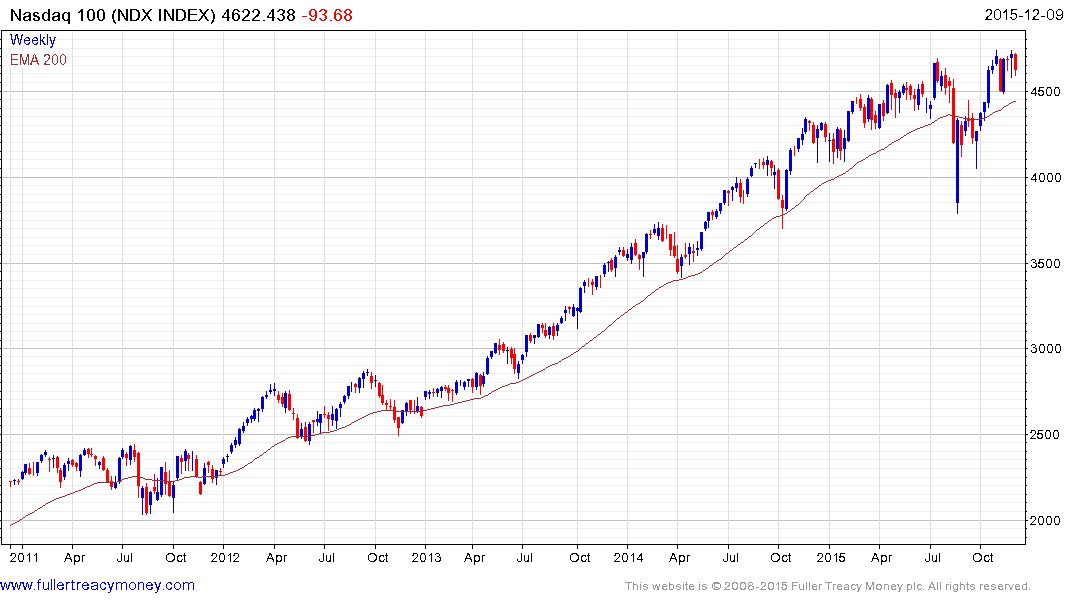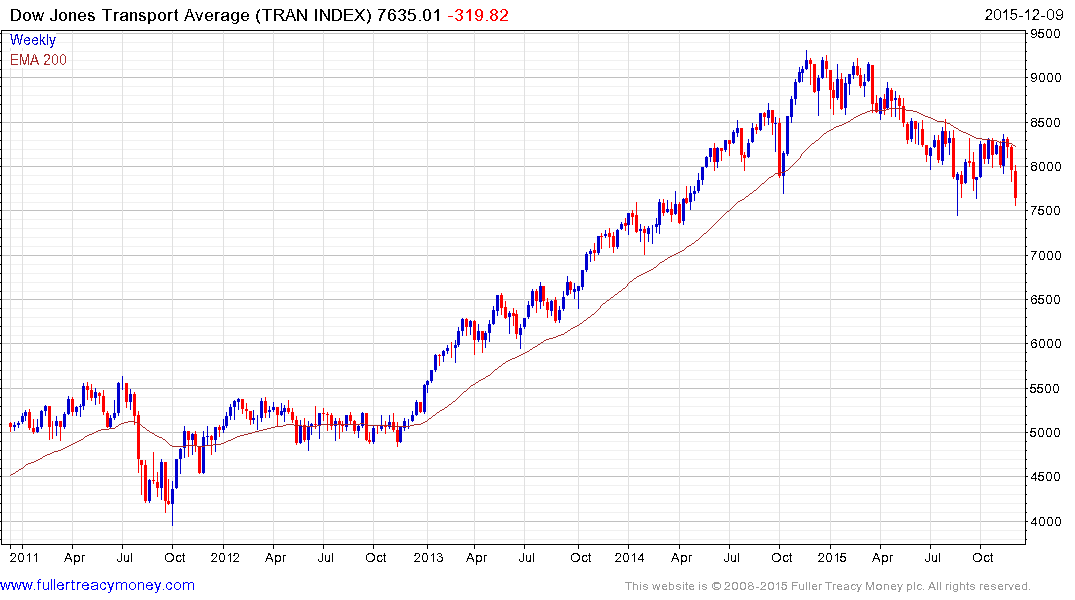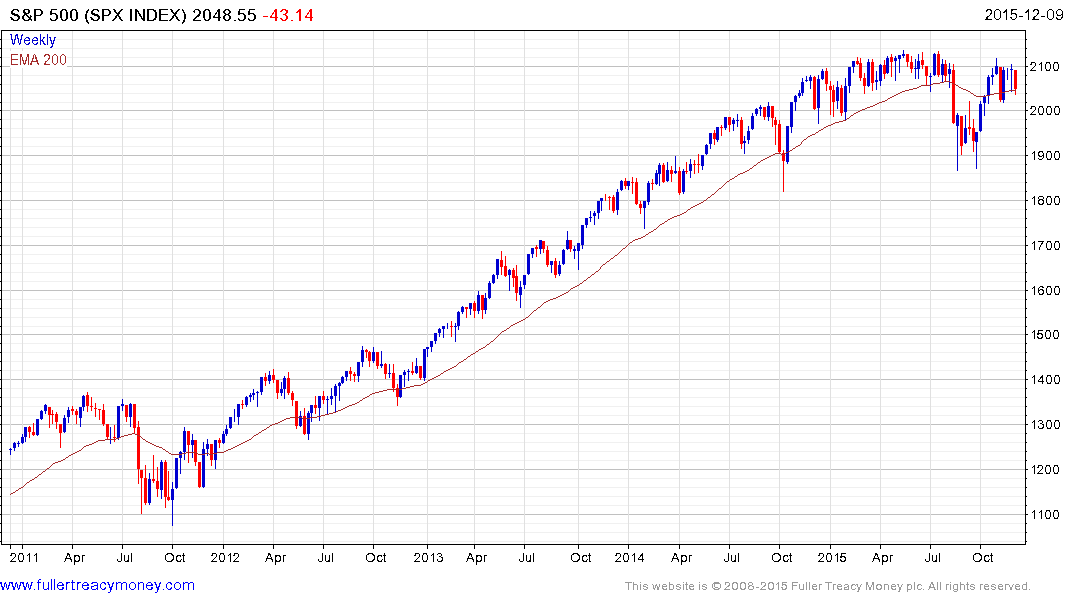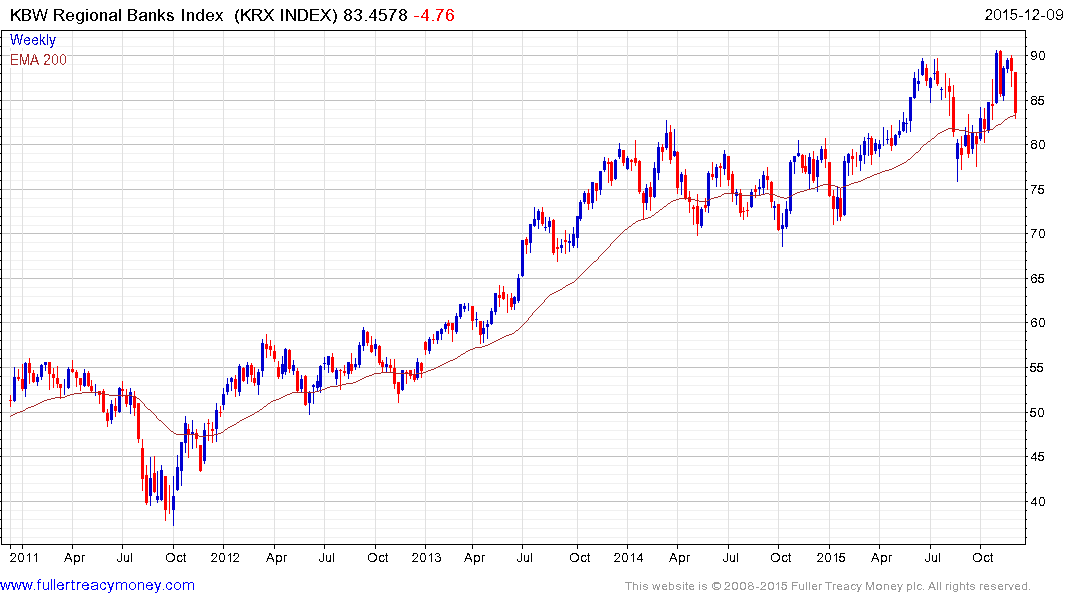Who's the Bear Driving Up the Price of U.S. Stock Options? Banks
This article by Joseph Ciolli for Bloomberg may be of interest to subscribers. Here is a section:
“One of the reasons S&P puts have been so expensive relative to at-the-money options this year is that the severely adverse scenario prescribed by CCAR program implies a very negative shock to the S&P,” said Fishman. “It creates value for the downside options.”
The structural shift in the price of bearish options has been debated on Wall Street for months. Another explanation has focused on the firms that supply them and the possibility that regulations such as the Dodd-Frank Act have limited market making. While banks have largely ceded their market-making role on equity exchanges to automated traders, they’re still among the biggest suppliers of stock hedges.
While stress tests are cause for hedging, there are other more imminent threats to the bull market spurring people to protect gains, according to Michael Antonelli of Robert W. Baird & Co.
“A lot of people have looked at crude, valuations and projections for earnings and come to the conclusion that it’s probably a good idea to protect to the downside,” said Michael Antonelli, an institutional equity sales trader and managing director at Robert W. Baird & Co. in Milwaukee. “Peoples’ views are definitely negatively tilted when it comes to 2016. They’re very cautious and concerned about the bull market continuing.”
None of us know what the effect the Fed’s first interest rate hike in almost a decade will have. Some believe the impact will be minimal. After all what is 25 basis points in the broader scheme of things and besides they would not raise interest rates unless they believed the economy could sustain growth. On the other hand people argue the debt binge corporations have engaged in, spurred by low interest rates, means a substantial number of businesses are highly leveraged and require low funding costs to sustain their positions. Regardless of whether we believe either or neither of these arguments the case for owning insurance during a loss of momentum after a six-year bull run probably makes sense. The fact additional regulation requires financial institutions to carry protection is an additional consideration.

The Nasdaq-100 remains a clear outperformer among US indices but has at least paused in the region of the July and 2000 peak and some additional consolidation of the powerful rally from the August low is looking more likely than not.

At the other extreme the Dow Jones Transportation Index has been trending lower for most of the year and pulled back, in a dynamic fashion, from the region of the 200-day MA over the last two weeks. It is now testing the August and October lows and a clear upward dynamic would be required to begin to signal a return of demand in this area.

The S&P 500 has been ranging mostly above the 200-day MA since late October and will need to hold the psychological 2000 level if a deeper and lengthier process of consolidation is to be avoided.

The KBW Regional Banks Index pulled back sharply today to break the short-term progression of higher reaction lows evident from October. A clear upward dynamic will now be required to confirm demand returning in the region of the 200-day MA.


